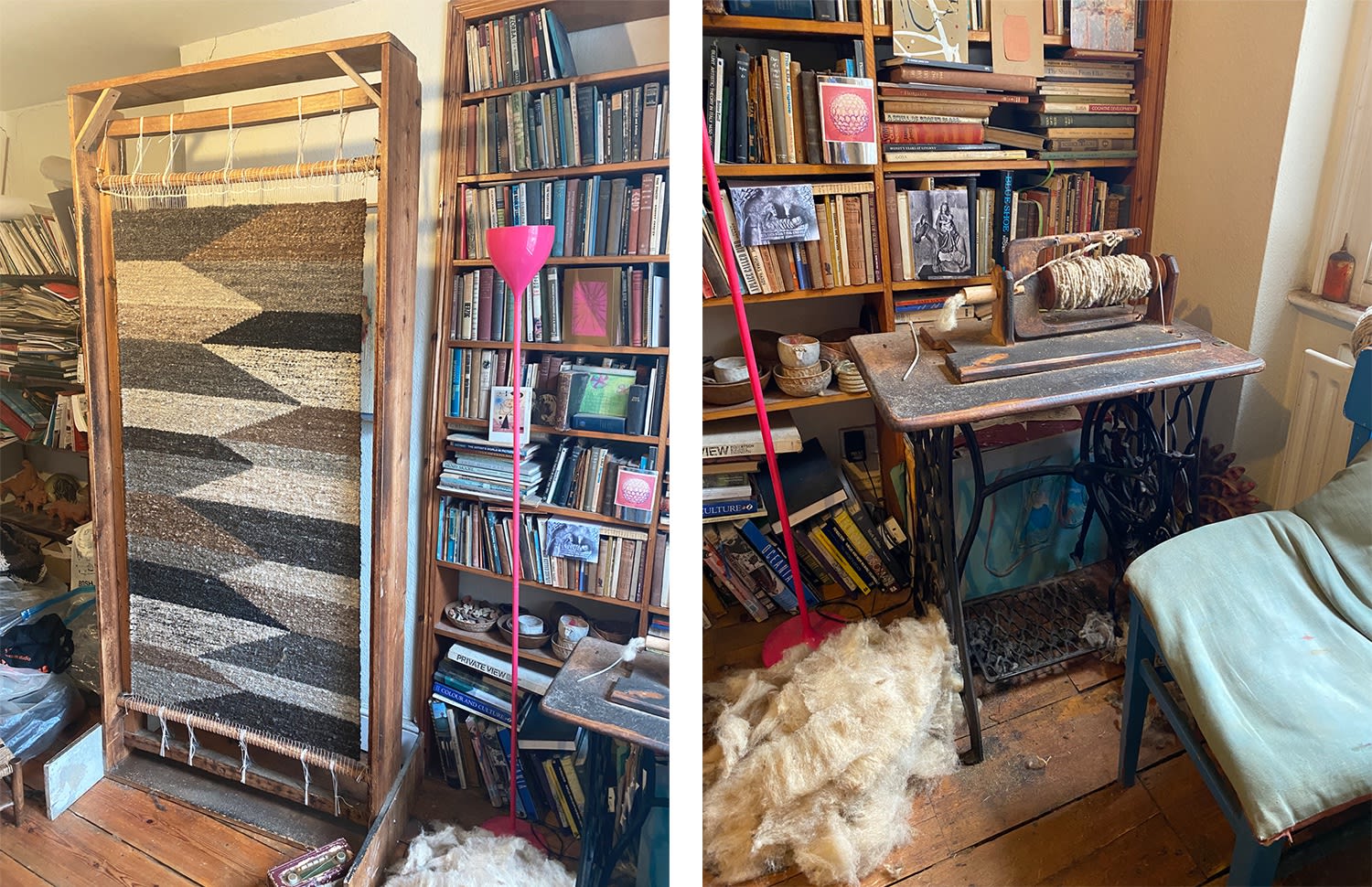-
twentytwentyone aim to offer diversity in design; by functionality, materials, process and price. Our focus on the best in the design discipline provides a common thread and guides our energies towards working with exceptional people and companies.
We are privileged to offer the work of Rachel Scott, whose dedication to her craft sets a unique benchmark in workmanship and design.
Rachel Scott takes her raw material and almost by alchemy, transforms this natural resource to create work that functions as a hardwearing floor covering or as outstanding works of art for the wall. The fleece she carefully selects from longstanding partners remains entirely honest, taken from British sheep, undyed or treated, and hand-worked to provide the essence of her work.Rachel's designs are intuitive and personal. There are themes to her work, but they are not repeated; each is entirely unique. The rich textural quality and individuality of her wool play through the landscape of geometry to ensure each rug has its own personality.
The honest approach to material and making is both a respectful craft and progressively of our time.It is an honour to offer Rachel’s work. We were fortunate to spend some time in her studio and can share some of that conversation.
-
Q&A
2021 Tell us a little about your background.
Rachel Scott I studied painting at the Royal College of Art from 1959 to 1964. It was my father’s instigation he took my portfolio to the Slade first, but whilst there saw information about the Royal College and thought it more progressive. I went straight from school and stayed for five years when usually it would be three. I was elected as a member of the London Group in 1965. I painted for nearly 20 years.2021 Why and how did you start weaving?
Rachel Scott In the late 1970s, I wanted to replace the stair covering and thought I might try to make it myself. I took a weekend course at the Handweavers Studio to learn spinning and weaving. That was it. My brother made me a spinning wheel, and my then-husband made the loom out of wood found in skips.
2021 Are these them?
Rachel Scott Yes, over forty years and still in use.2021 Tell us about the processes and materials; where does the wool come from?
Rachel Scott The sheep are important. I use Herdwick from a friend, Colin, who has around 100 Herdwick. Also, Dorset fleece, Shetland and Hebridean. My great uncle had a flock of Black Welsh sheep. Young sheep produce a darker fleece which gets lighter and greyer as they get old. You can tell their age by the colour. It's all natural; the colours in the rugs are the sheep.

I use these carders to align the fibres. They are a bit old, hard to use; I need new ones. People used to use teasels.
It is then spun onto the bobbin, then rolled into balls, ready for weaving.The spinning takes two evenings, maybe more - I keep falling asleep nowadays. The weaving takes around six days.
A short film of Rachel preparing wool
2021 Tell us about your designs.
Rachel Scott The designs are true to the nature of weaving – straight lines making geometry shapes. You need enough contrast to show the design. Mixing soft greys from different wools. These triangular ones take seven different colours, contrasting colours. It's surprising how different each design gets just using straight lines.
There is something that people like about grey rather than brown. Most people are grey people, though my daughter's school uniform was grey, she’s not too keen on grey, but my brother is a brown person, he’s quite unusual.
Very simple designs can flow across, from side to side, like waves. Not always set within. It becomes difficult at the top of the rug; I get a bit anxious about how to end-off. How you design it so it meets up with the rest of the rug. You can unbalance them. I often have to undo them if it's not right. It's not like painting, you have to be careful, as you can’t just paint over.
There are maybe 20 or so designs I come back to. I don’t call them anything, there aren’t any names.2021 And how do people live with your work?
Rachel Scott The idea that as wall hangings they could be hung together came from a show curated by John Bunker at UAL Chelsea, a joint show with Frank’s (Bowling) paintings and my rugs. John did it with eight rugs. People say don’t you do bigger ones, so this shows what you can do. I always think that they shouldn’t be stitched together, but hung separately.
Wool is incredibly strong and hardwearing. Use it and don’t be worried. If you spill wine just soak the rug in the bath and let it dry over a couple of broomsticks.We thank Rachel for her time and her insight.
A selection of Rachel’s work is available for sale and can be seen both in our shop and showroom or ordered online. -
Hand-woven Rugs
-









